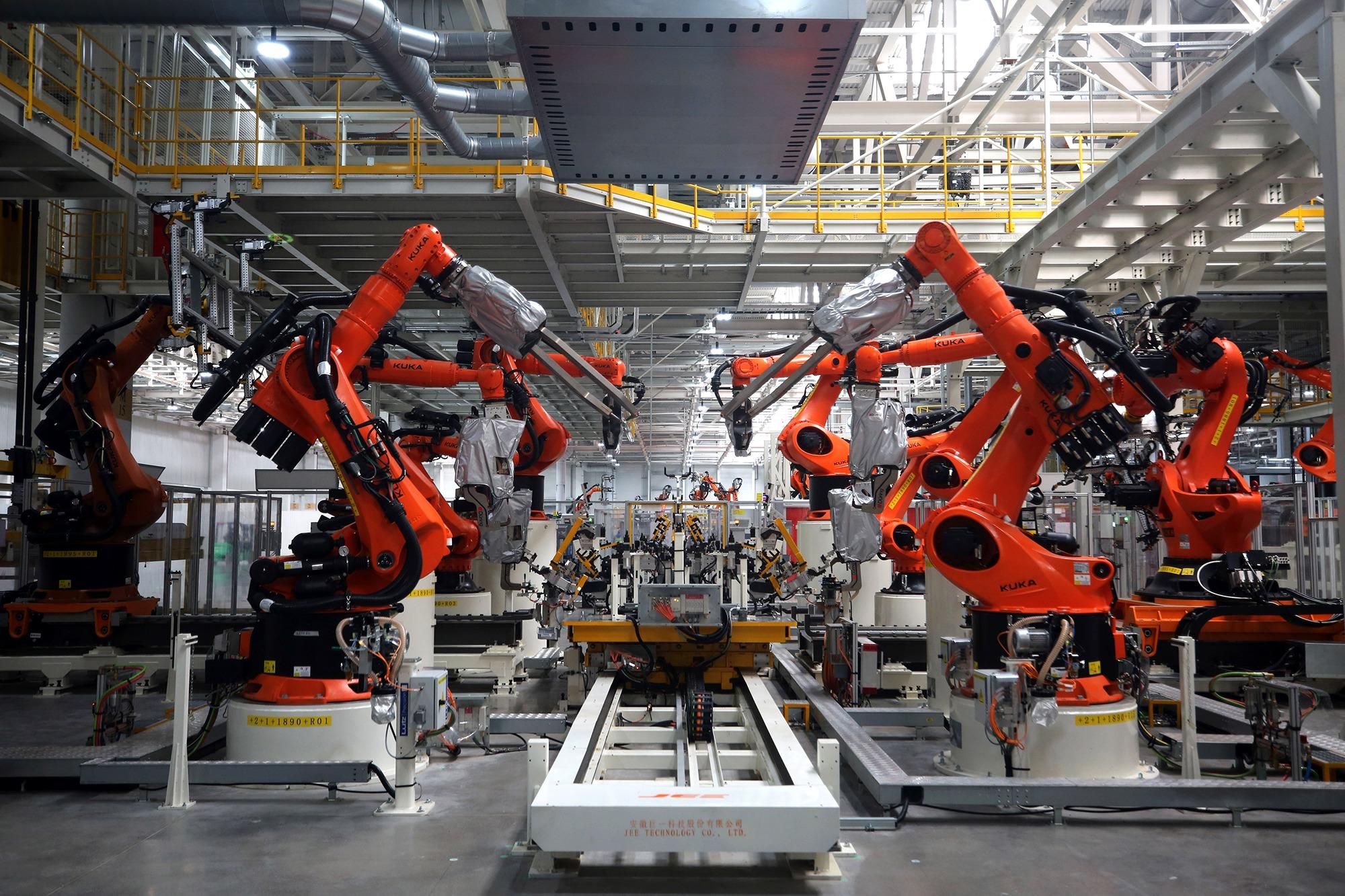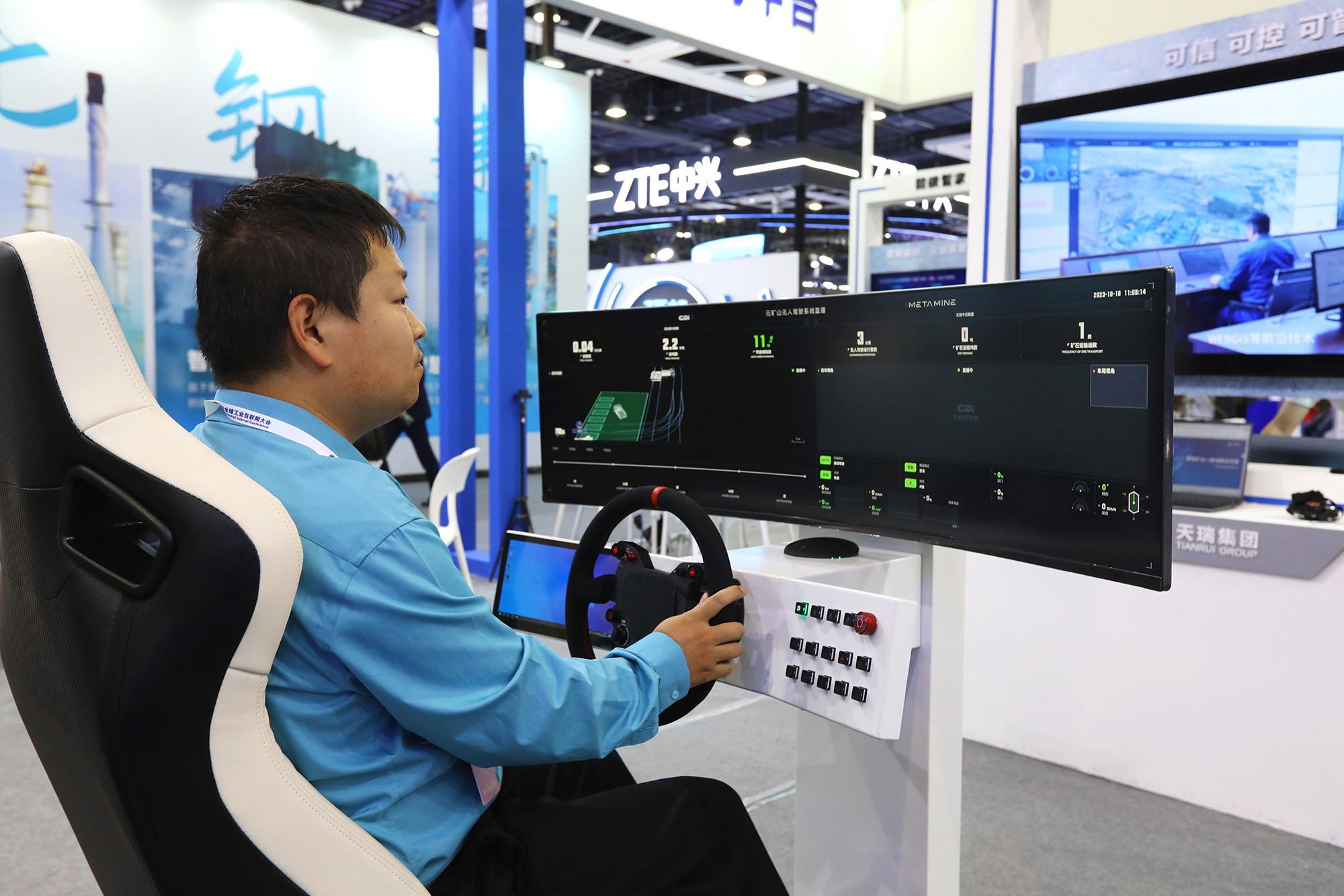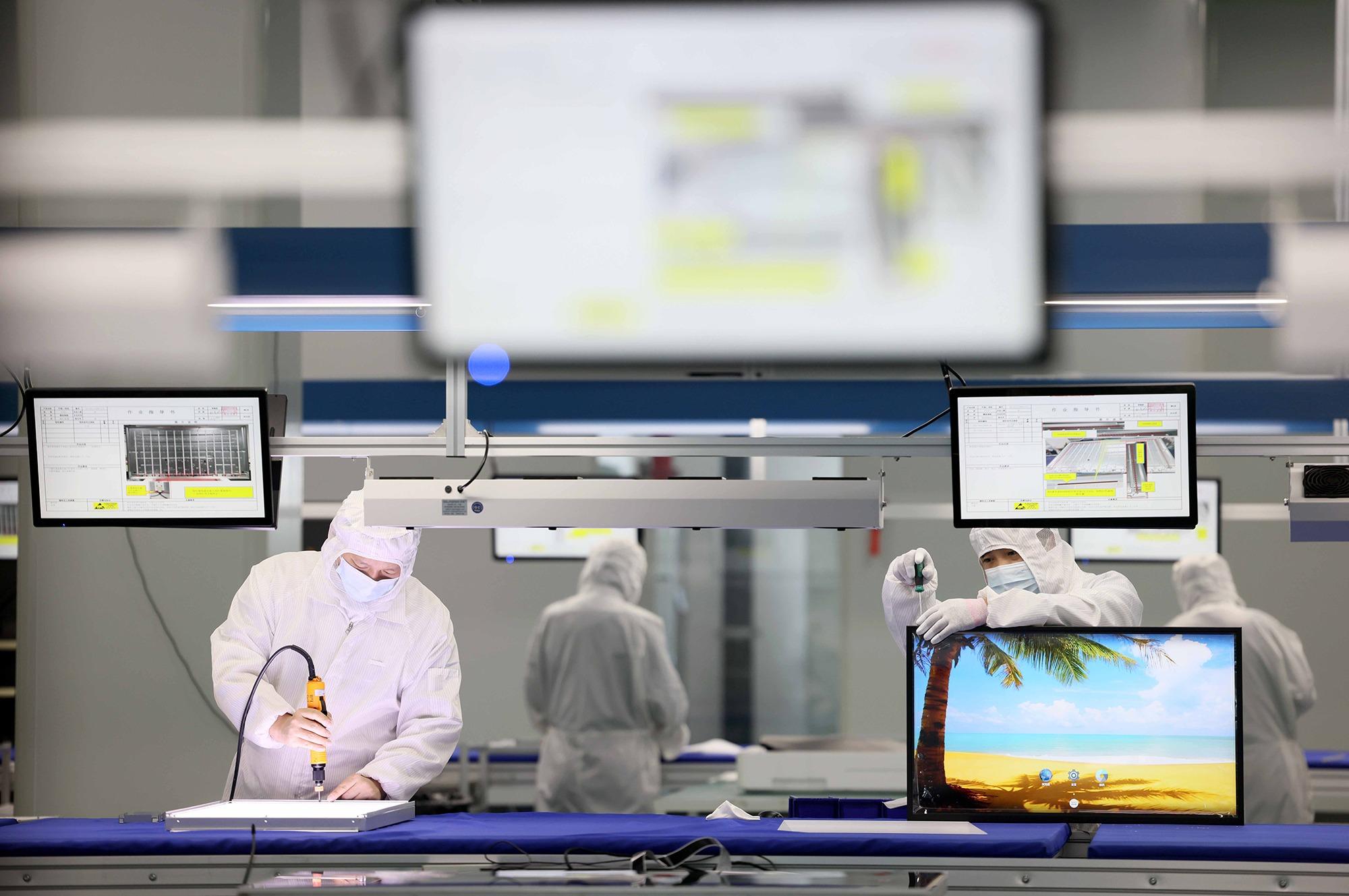'New productive forces' gain currency as drivers of high-quality development
 Intelligent production robots are seen at a workshop of the Volkswagen Anhui MEB (Modular Electric Drive Matrix) plant in Hefei, East China's Anhui province, on May 29, 2023. (PHOTO / XINHUA)
Intelligent production robots are seen at a workshop of the Volkswagen Anhui MEB (Modular Electric Drive Matrix) plant in Hefei, East China's Anhui province, on May 29, 2023. (PHOTO / XINHUA)
"New productive forces" has become China's newest buzz-phrase ever since it was frequently mentioned by the Chinese leadership and the authorities concerned like local governments in their new-year economic growth plans.
Compared with traditional productive tools that are driven by elements like labor, land and capital, new productive forces refer to a new form of productive forces that are led by technological innovation and new elements like data.
At a time when China's economy has been rattled by the ailing property market, decreasing private investment and aging population — all of which are traditional productive tools — as well as rising external geopolitical tensions, new productive forces could help sharpen focus on the ways and means of finding economic momentum, industry experts said.
READ MORE: Xi stresses development of new productive forces
They said they believe that China's emphasis on new productive forces can accelerate the development of future-oriented industries and key technologies, and thereby promote modern industrial development and help advance the world's second-largest economy on the global value chain.
In a study session of the Political Bureau of the Communist Party of China Central Committee, presided by Xi Jinping, general secretary of the CPC Central Committee, Xi emphasized that developing new productive forces is an endogenous requirement and a pivot of high-quality development, and that efforts should be kept up to promote innovation and faster development of new productive forces.
Xi pointed out that scientific and technological innovation can generate new industries, new models and new momentum, and is the core element for developing new productive forces.
It is a must to strengthen scientific and technological innovation, especially original and disruptive innovations, accelerate the efforts to build high-level self-reliance and strength in science and technology, and do a good job in making breakthroughs in core technologies in key fields, so that original and disruptive scientific and technological innovations can emerge one after another, and foster more momentum for the development of new productive forces, Xi said.
Wei Jianguo, former vice-minister of commerce, said: "If China wants to follow the path of rapid development, the country must plan ahead on new productive forces to seize the opportunity."
 An employee from a participating enterprise demonstrates a pilotless remote cockpit during the 2023 Global Industrial Internet Conference in Shenyang, Liaoning province, on Oct 18, 2023. (PHOTO / XINHUA)
An employee from a participating enterprise demonstrates a pilotless remote cockpit during the 2023 Global Industrial Internet Conference in Shenyang, Liaoning province, on Oct 18, 2023. (PHOTO / XINHUA)
Wei, who is also vice-chairman of the China Center for International Economic Exchanges, predicted that new productive forces will be key to competition for global economies over the next five to 10 years.
"The top priority is to establish as soon as possible a unified and open technology factor market with orderly competition, complete systems and sound governance," Wei said.
Wei further said the biggest difference between traditional productive forces and new productive forces is that the latter get rid of the need to make investment of a large amount of resources; instead, they place more emphasis on the leading role of scientific and technological innovation, which mainly includes strategic emerging industries and future-oriented industries.
READ MORE: New productive forces play key role in growth
Huang Qifan, former mayor of Chongqing, expressed similar views. He said at a conference focused on new productive forces in Guangzhou, Guangdong province, in December that China's biggest choke point in modernizing its economy lies in limitations in developing productive services.
Productive services refer to sectors and technologies primarily designed to enhance traditional manufacturing, such as cloud computing, financial and legal advice.
"If you have a large manufacturing sector but the proportion of productive services is low, you can only produce middle- to low-value manufacturing products," Huang said.
"We are able to manufacture the latest equipment for the 5G network, but we cannot make use of it. This is like building a port but having no one to run it, fixing a road but having no cars," he said.
The remarks of both Wei and Huang delineate what new productive forces are and stress that the key to developing them lies in the development of future-oriented industries.
In an interview last month, Jin Zhuanglong, minister of industry and information technology, highlighted the need to develop new productive forces and coordinate technological innovation, large-scale development and application scenarios.
Artificial intelligence, humanoid robots, metaverse, next-generation internet, 6G, quantum information and deep sea, deep air and deep space figure among China's new priorities for future-oriented industries, he said.
"China's blueprint for future industries is becoming clearer this year. Fields like brain-like intelligence, quantum information and genetic technology will likely gain greater support," said Luo Zhiheng, chief economist of Guangzhou-based Yuekai Securities.
"Future industries may enter a new phase as detailed policies or action plans are expected from various ministries and commissions concerned," Luo said.
 Employees work on a smart display screen production line at a science and technology company in Hefei, Anhui province, on Nov 16, 2023. (PHOTO / XINHUA)
Employees work on a smart display screen production line at a science and technology company in Hefei, Anhui province, on Nov 16, 2023. (PHOTO / XINHUA)
Till the end of January, all provincial-level regions had unveiled their growth targets for 2024 in local government work reports. Besides the usual economic goals, the development of new productive forces has become a common goal for them this year.
Guangdong in South China, for instance, said it will ramp up efforts to boost new productive forces in industries like integrated circuits, new energy storage and commercial spaceflights. It also plans to foster future industries like 6G technology and humanoid robots.
East China's Anhui province, which is known as an emerging center for technological innovations, said it will drive new industrialization and build an internationally competitive advanced manufacturing cluster this year, besides focusing on the development of emerging sectors like new energy.
Pan Helin, co-director of the Digital Economy and Financial Innovation Research Center at Zhejiang University's International Business School, said the reason why new productive forces are high on the agendas of local governments this year is that China has sent a clear signal that it will veer toward a growth model focused on "quality "over "quantity".
"Against a background of economic transition, local governments also face great pressure in finding new economic engines. New productive forces came at just the right time, and if developed well, they are expected to greatly help them win over regional competition and drive the country's economic growth as a whole," he said.
Industry experts, however, noted that to develop future-oriented industries into new productive forces, it is essential to enhance both research and development of key technologies and fundamental research.
China aims to scale up its R&D budget by more than 7 percent annually during the 14th Five-Year Plan period (2021-25). Consultancy McKinsey & Co said in a report that such a growth target will make China the world's largest R&D spender.
"Although the R&D intensity of China has been continuously increasing, the country's investment in fundamental research is insufficient, which directly leads to a relative lack of innovations based on complex, underlying supporting technologies and scientific research," said Liu Qiao, dean of the Guanghua School of Management of Peking University, in a note.
Liu said China's position index in the global value chain or GVC in 2018 was 0.01 while the US index was 0.29. Thus, the US continues to be at the absolute upstream of the GVC, with strong control over core technologies and raw materials. This gives it the power to create constraints downstream on other countries and economies in the GVC.
"To change this situation, China must increase investment in fundamental R&D and promote Chinese industries to move upstream in the global value chain. Only when breakthroughs are achieved in fundamental research can we truly break developed countries' vice-like grip on key technologies," he said.


